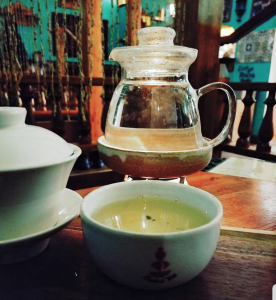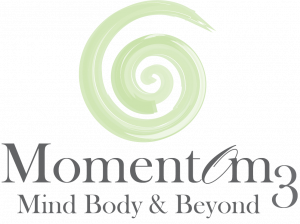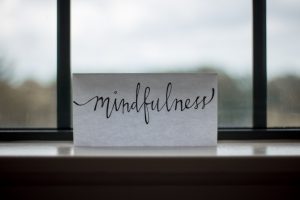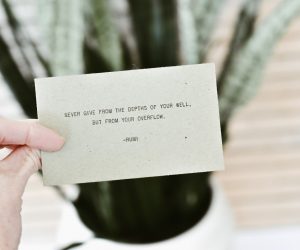Lessons From Karma: Building Resiliency One Cup of Tea at a Time
What Goes Around Comes Around
Do you believe in karma? One of the definitions of karma is the destiny that you earn through your actions and behavior. Perhaps you have even caught yourself saying that something is “good karma or “bad” karma.
Let me introduce you to Karma…..

Good Karma
This mischievous, high- spirited pup is a Portuguese Water Dog. I gave her the name Karma for several reasons, but mainly because I am a believer in what goes around comes around. And in true karma nature, she can be “bad” or “good” depending on the day, how much energy she has stored up, or what may or may not be out on the counter!
Tea Lover
What does Karma have to do with resiliency? There is a connection, I promise, but in between that connection lies my love of tea.
I will spare you the long version, but in a nutshell, I love tea. Recently, while visiting Asheville, NC I decided to treat myself to a trip to a local tea house. It was a lovely experience–I found a quaint space in the traditional tea room and carefully took my time to pick out just the perfect tea from the menu:
GUI HUA CHA –”Green Tea with osmanthus blossoms. A traditional Chinese recipe. Green tea from Anhui province scented with tiny osmanthus flowers from the cinnamon tree. The intoxicating, almost citrus scent from repeated infusions has been an inspiration to Chinese poets over the centuries.”
The tea was served traditional style in a glass teapot with a candle burner to keep it at just the right temperature.—life was good!

So good, that I had my new, favorite loose leaf tea packaged up to take home with me so that I could experience my serene, relaxed state at home.
Fast forward about one week. I am now back home from my trip–Friday rolled around and after a very long and stressful week at work visions of my GUI HUA CHA Green Tea with osmanthus blossoms danced in my head. Carefully I planned how I would make my tea, sit in my easy chair and sip away my stress.
Plot Twist
When entered my home I knew in an instant that Karma had been “bad” by the “look”. Averting eye contact, nervously thumping her tail on the hardwood floor, and “I’ve been naughty” written all over her face.
I went to the normal ‘crime scene’ in the living room and that is where I found it. My GUI HUA CHA Green Tea with osmanthus blossoms, or at least a few remnants of it, along with the shredded bag all over the floor.
Naughty Karma!
I immediately went into a panic because I know that ingesting things can be harmful to dogs–especially caffeine and possibly dried osmanthus blossoms. I knew I needed to be proactive and ensure that there wouldn’t be any problems.
Long story short. The tea had a very stimulating effect on Karma–picture Tazmanian Devil dog–and so off we rushed to the Emergency Vet Clinic.
Flashback
It was the same Emergency Vet Clinic that over 5 years ago we had rushed my first Portuguese Water Dog, Hogan. Unbenounced to us, he had Hemangiosarcoma (a malignant tumor of blood vessels) on his spleen which ruptured causing internal bleeding and rather sudden passing. This tragic loss sparked a path of grief and desperation. A path I did not want to go down again.
I knew in that moment that I had to be strong.
Resiliency
Here is where resiliency comes in. Resiliency is bouncing back or adapting to difficult or challenging life experiences. I had to adapt quickly and I had to be resilient.
It would be silly of me to ask if you have ever experienced one of life’s inevitable difficulties or had to overcome a challenge–everyone does–unfortunately, it is a fact of life. What matters most is how resilient you are. How do “bounce back” and become even wiser, stronger, and more personally powerful in the process?
I help people stress less and live more fully. Building resilience is key component.
Here are 4 ways to build resiliency:
- Mindfulness: according to Jon Kabat-Zinn, “Mindfulness means paying attention in a particular way: on purpose, in the present moment, and nonjudgmentally.” Since resiliency is in part cultivated within us, it is important to be fully aware of how we perceive and choose to respond to stress. Resiliency is about pausing and observing and then resisting getting stuck in autopilot. It empowers us to move forward–to learn, grow and evolve.
- Connection–instead of isolating yourself, surround yourself with family and friends who are supportive and loving
- Positivity: Unfortunately, our brains are hardwired for negativity. This is part of the primitive brain and according to Rick Hanson, Ph.D., is a psychologist and New York Times best-selling author, “The brain is like Velcro for negative experiences and Teflon for positives ones.”. Instead of feeding anxiety and worries with negative thoughts and “what if’s”, flip the positivity switch. Find a silver lining, stay present in the moment, and express gratitude (even for the smallest things)
- Humor: It has been said that laughter is the best medicine! Playful humor enhances resiliency and laughter is well know to decrease stress. Studies show that it actually causes a release of endorphins and dopamine, the feel-good chemicals.
These were just a few ways I was able to find a silver lining in what could have been another tragedy.
Happy Ending
You might be wondering how this all turned out for Karma. She made a full recovery, but first she was admitted to the doggie hospital for an overnight stay– IV fluids, plenty of peeing to get the tea out of her system, and round the clock vital checks.
Speaking of humor….my daughter was comforting me in the waiting room and said “Mom, isn’t it interesting that you are always yelling at Dad & I to “doggy proof” and put things away so Karma doesn’t get them? This time you were the one who left the tea on the counter…it is kinda like …pause…“karma, huh?”. Cymbal crash. Mic drop. Bam.
Want to know how much my cup of GUI HUA CHA Green Tea with osmanthus blossoms cost?
Drumroll…

…nearly $732.00! Wow, that was quite the pricey cup of tea, but building resilience is PRICELESS!






